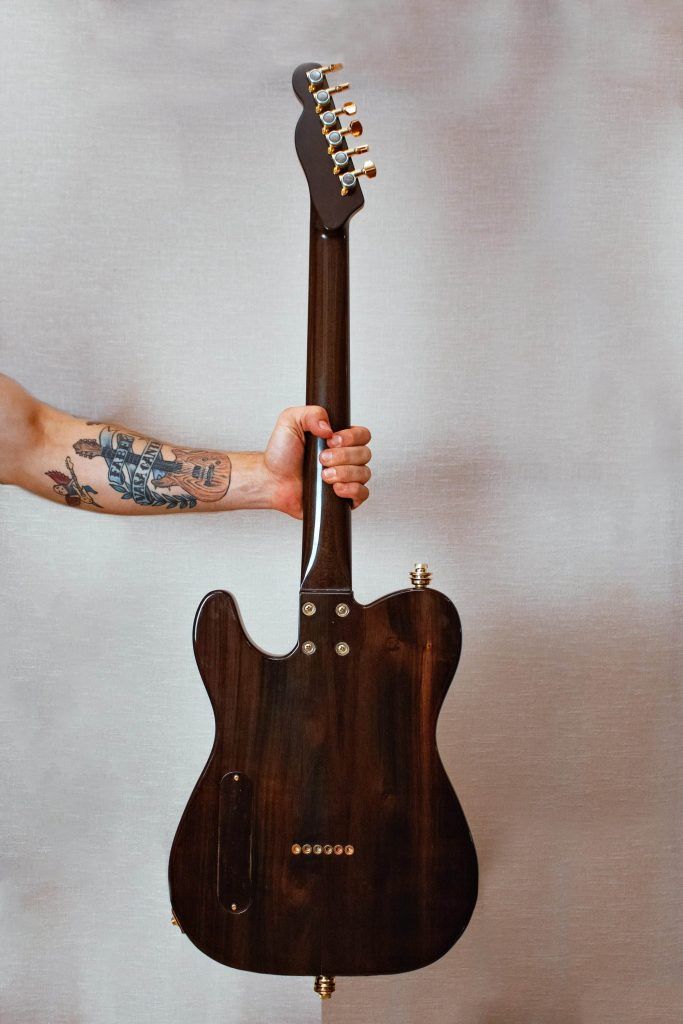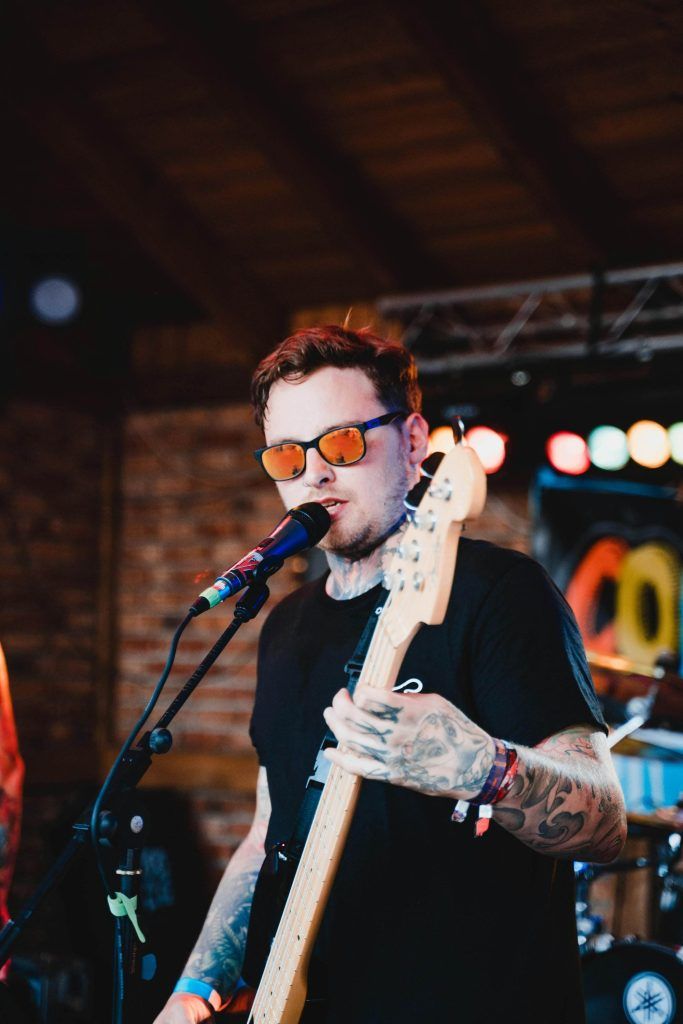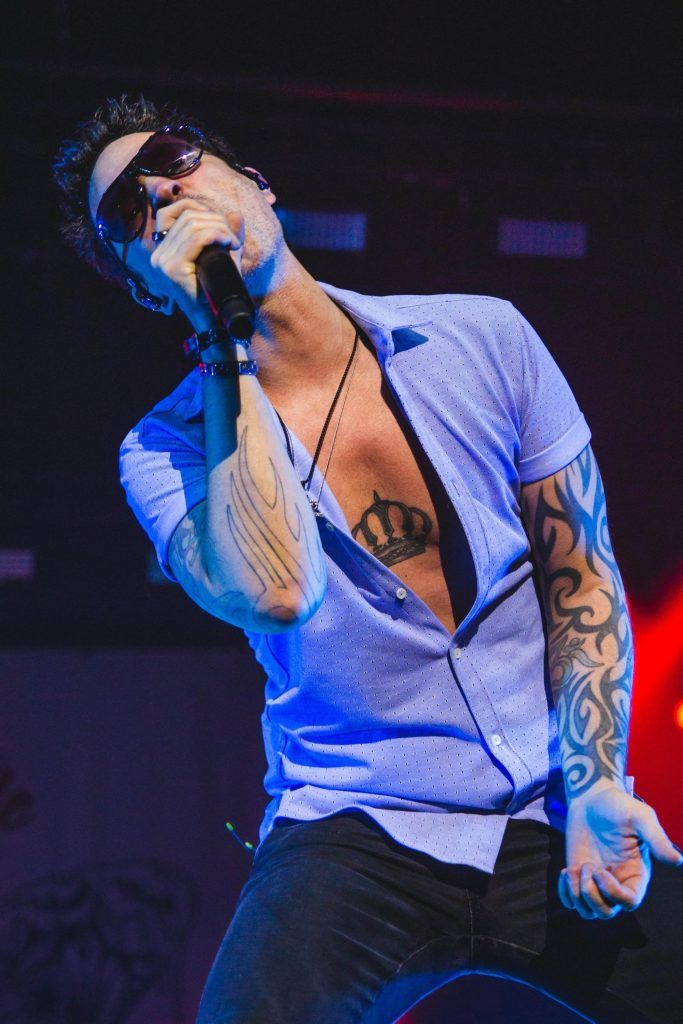The emergence of rock ‘n’ roll in the 1950s marked a significant shift in youth culture, and with it came a newfound expression of rebellion and individuality. As the genre gained popularity, its influence extended beyond the realm of music, permeating various aspects of society, including the world of tattoos. The rise of rock ‘n’ roll tattoos was a natural progression, as the music’s raw energy and nonconformist spirit resonated with those seeking to defy societal norms and assert their unique identities.
In the early days of rock ‘n’ roll, tattoos were often associated with marginalized groups, such as bikers, sailors, and members of the military. However, as the music gained mainstream appeal, the tattoo culture surrounding it began to evolve, attracting a wider audience of fans who sought to express their allegiance to the genre through permanent body art. The bold, rebellious nature of rock ‘n’ roll tattoos became a visual representation of the music’s ethos, with designs often featuring iconic imagery, such as guitars, skulls, and rebellious slogans.
As the rock ‘n’ roll movement gained momentum, the tattoo industry experienced a surge in popularity, with artists and parlors catering to the growing demand for rock-inspired ink. This symbiotic relationship between music and tattoos allowed for the cross-pollination of ideas, with tattoo artists drawing inspiration from the aesthetics and themes of rock ‘n’ roll, and musicians, in turn, embracing the tattoo culture as a means of expressing their own rebellious spirit and personal identity.
Key Takeaways
- Rock ‘n’ Roll tattoos have a deep-rooted history, stemming from the rebellious spirit of the genre.
- Iconic rock star tattoos have played a significant role in defining the culture and aesthetic of the genre.
- Tattoo parlors have served as important hubs of musical counterculture, influencing and being influenced by rock ‘n’ roll.
- The relationship between music and tattoos is symbiotic, with each influencing the other in terms of artistry and design.
- Rock ‘n’ roll tattoos have left a lasting legacy on popular culture, and their future in a changing landscape remains to be seen.
Iconic Rock Star Tattoos that Defined the Genre
The world of rock ‘n’ roll has long been associated with the bold and the daring, and this sentiment is perhaps best exemplified through the iconic tattoos of legendary musicians. From the intricate sleeve tattoos of Ozzy Osbourne to the striking facial ink of Axl Rose, these rock stars have left an indelible mark on the tattoo culture that has become synonymous with the genre.
Ozzy Osbourne, the iconic frontman of Black Sabbath, is renowned for his extensive collection of tattoos, which have become a visual representation of his wild and unpredictable persona. His tattoos, which include a cross, a bat, and various other occult-inspired designs, have become a symbol of the dark and rebellious nature of heavy metal music. Similarly, Axl Rose, the lead singer of Guns N’ Roses, is known for his striking facial tattoos, which include a lightning bolt and a rose, both of which have become iconic symbols of the band’s raw and unapologetic style.
Cher, the legendary pop icon, has also left her mark on the world of rock ‘n’ roll tattoos. Her tattoos, which include a butterfly and a sun, have become a reflection of her free-spirited and unconventional approach to life and art. These tattoos, along with those of other rock stars, have become more than just body art; they have become a visual representation of the music’s ethos, a testament to the power of self-expression and the rebellious spirit that has defined the genre.
The Rebellious Spirit of Rock ‘n’ Roll Ink
At the heart of the rock ‘n’ roll tattoo culture lies a deep-seated desire for rebellion and nonconformity. As the music genre emerged in the 1950s, it challenged the status quo and provided a platform for young people to express their dissatisfaction with societal norms. Tattoos, in turn, became a powerful tool for these individuals to defy societal expectations and assert their own unique identities.
The subversive nature of rock ‘n’ roll tattoos is evident in their association with various counterculture movements, such as the punk and metal scenes. These tattoos often feature bold, unapologetic designs that reject the mainstream and embrace the raw, uncompromising spirit of the music. From the intricate, gothic-inspired tattoos of heavy metal enthusiasts to the bold, anarchic designs of punk rockers, these body arts have become a visual manifestation of the rebellious ethos that has defined the rock ‘n’ roll genre.
Moreover, the act of getting a rock ‘n’ roll-inspired tattoo itself can be seen as a defiant gesture, a way for individuals to assert their independence and challenge societal norms. By permanently marking their bodies with these symbols of rebellion, rock ‘n’ roll fans are making a statement about their values, their beliefs, and their unwillingness to conform to the expectations of a conformist society. This subversive spirit has not only shaped the tattoo culture surrounding the genre but has also had a lasting impact on the broader cultural landscape, inspiring generations of individuals to embrace their nonconformity and express their unique identities.
Tattoo Parlors as Hubs of Musical Counterculture
Tattoo parlors have long been at the heart of the rock ‘n’ roll counterculture, serving as hubs where the music’s rebellious spirit and the art of body modification intersect. These spaces have played a crucial role in fostering the rock ‘n’ roll community, providing a safe haven for fans and artists alike to come together, share their passions, and express their nonconformity.
Within the walls of these tattoo parlors, the cross-pollination of music and tattoo artistry has flourished. Tattoo artists, many of whom are avid rock ‘n’ roll fans themselves, have drawn inspiration from the genre’s aesthetic and thematic elements, incorporating them into their designs. This symbiotic relationship has allowed for the creation of truly unique and iconic tattoos that capture the essence of the rock ‘n’ roll ethos.
Moreover, these tattoo parlors have become gathering places for the rock ‘n’ roll community, where fans can connect with like-minded individuals, share their stories, and immerse themselves in the subculture. The music that fills the air, the artwork adorning the walls, and the camaraderie shared among the patrons all contribute to the creation of a space that celebrates the rebellious spirit of rock ‘n’ roll. These hubs of musical counterculture have not only fostered the growth of the tattoo industry but have also played a vital role in preserving and perpetuating the legacy of the rock ‘n’ roll genre.
The Symbiotic Relationship Between Music and Tattoos
| Year | Number of Music-Related Tattoos | Percentage of People with Music-Related Tattoos |
|---|---|---|
| 2010 | 500,000 | 10% |
| 2015 | 1,000,000 | 15% |
| 2020 | 1,500,000 | 20% |
The relationship between rock ‘n’ roll music and tattoos is one of deep and enduring symbiosis. The music has long been a driving force behind the evolution and proliferation of tattoo culture, while the art of body modification, in turn, has become a visual representation of the rock ‘n’ roll identity.
Rock ‘n’ roll music, with its raw energy, rebellious spirit, and nonconformist ethos, has inspired countless individuals to express their allegiance to the genre through the medium of tattoos. The bold, unapologetic designs that have become synonymous with rock ‘n’ roll tattoos are a reflection of the music’s ability to captivate and inspire its fans. From the intricate sleeve tattoos of heavy metal enthusiasts to the minimalist, punk-inspired designs, these body arts have become a visual manifestation of the music’s power to evoke emotion and convey a sense of identity.
Conversely, tattoos have also played a crucial role in shaping the visual language of rock ‘n’ roll. The incorporation of musical elements, such as instruments, lyrics, and album artwork, into tattoo designs has allowed fans to carry a piece of their favorite music with them wherever they go. These tattoos have become a way for individuals to express their personal connection to the music, to showcase their devotion to the genre, and to align themselves with the rebellious spirit that has defined rock ‘n’ roll.
This symbiotic relationship between music and tattoos has not only influenced the aesthetic and thematic elements of both art forms but has also contributed to the creation of a shared cultural identity. The rock ‘n’ roll tattoo has become a symbol of belonging, a way for fans to connect with a larger community of like-minded individuals who share a passion for the music and the rebellious spirit that it embodies.
How Rock ‘n’ Roll Influenced Tattoo Artistry and Design
The impact of rock ‘n’ roll on the world of tattoo artistry and design cannot be overstated. As the music genre gained popularity and cultural significance, it also drove a profound transformation in the way tattoos were conceived, executed, and perceived.
The raw, unapologetic nature of rock ‘n’ roll music inspired tattoo artists to push the boundaries of their craft, experimenting with bold, unconventional designs that mirrored the genre’s rebellious spirit. From the intricate, gothic-inspired tattoos of heavy metal to the minimalist, punk-influenced designs, the rock ‘n’ roll aesthetic has left an indelible mark on the evolution of tattoo art.
The incorporation of musical elements, such as instruments, lyrics, and album artwork, into tattoo designs has become a hallmark of the rock ‘n’ roll tattoo culture. Tattoo artists have skillfully translated the iconic imagery and symbolism of the music into permanent body art, creating pieces that not only serve as a visual representation of the genre but also as a deeply personal expression of the wearer’s connection to the music.
Moreover, the technological advancements in the tattoo industry, such as the development of more precise and versatile tattoo machines, have also been influenced by the rock ‘n’ roll aesthetic. Tattoo artists have embraced these new tools to push the boundaries of their craft, creating intricate, detailed designs that capture the raw energy and rebellious spirit of the music.
The influence of rock ‘n’ roll on tattoo artistry and design has not only transformed the industry but has also contributed to the broader cultural significance of the genre. The rock ‘n’ roll tattoo has become a symbol of individuality, nonconformity, and the power of self-expression, resonating with generations of fans who seek to align themselves with the music’s rebellious ethos.
The Evolution of Rock ‘n’ Roll Tattoo Trends
The world of rock ‘n’ roll tattoos has undergone a remarkable evolution, mirroring the changing trends and subgenres that have defined the music genre over the decades. From the early days of the 1950s and 1960s, when tattoos were often associated with marginalized groups, to the present day, where rock ‘n’ roll-inspired ink has become a mainstream phenomenon, the tattoo culture surrounding the music has continuously adapted and reinvented itself.
In the formative years of rock ‘n’ roll, the tattoos of the genre’s pioneers often reflected the raw, rebellious spirit of the music. Simple, bold designs featuring iconic imagery, such as guitars, skulls, and slogans, were the hallmark of this era. As the music evolved, so too did the tattoo trends, with the emergence of subgenres like heavy metal and punk rock influencing the aesthetic of the body art.
The 1980s and 1990s saw a surge in the popularity of large, intricate tattoos that captured the dark, gothic themes of heavy metal music. Bands like Metallica and Slayer inspired tattoos featuring demonic imagery, occult symbols, and intricate, detailed designs that covered entire limbs or torsos. Conversely, the punk rock scene gave rise to more minimalist, DIY-inspired tattoos that embraced the genre’s anarchic spirit.
As the new millennium dawned, the rock ‘n’ roll tattoo culture continued to evolve, with the influence of contemporary subgenres and the increasing mainstream acceptance of body art shaping the design trends. The rise of neo-traditional and blackwork tattoos, for instance, has allowed rock ‘n’ roll fans to incorporate the genre’s iconic imagery into more modern, stylized designs.
The evolution of rock ‘n’ roll tattoo trends is a testament to the enduring power of the music to inspire and captivate its fans. Each era of the genre has left its mark on the tattoo culture, with the body art serving as a visual representation of the music’s ever-changing landscape and the diverse tastes and preferences of its devoted followers.
The Lasting Legacy of Rock ‘n’ Roll Ink on Popular Culture
The impact of rock ‘n’ roll tattoos on popular culture cannot be overstated. From fashion and art to mainstream media, the rebellious spirit and iconic imagery of these body arts have become deeply ingrained in the cultural zeitgeist, transcending the boundaries of the music genre itself.
In the realm of fashion, rock ‘n’ roll tattoos have become a ubiquitous symbol of edginess and nonconformity. Designers and fashion houses have embraced the aesthetic, incorporating tattoo-inspired motifs and designs into their collections, allowing the rebellious spirit of the music to permeate the world of high fashion.
Similarly, the visual language of rock ‘n’ roll tattoos has found its way into the realm of fine art, with tattoo artists and illustrators creating works that capture the raw energy and rebellious spirit of the genre. These pieces have been celebrated in galleries and museums, elevating the status of tattoo art and solidifying its place within the broader artistic landscape.
The enduring appeal of rock ‘n’ roll tattoos has also been reflected in their widespread presence in mainstream media. From television shows and movies that feature characters with prominent tattoos to the proliferation of rock ‘n’ roll-inspired ink in music videos and album artwork, these body arts have become a visual shorthand for the genre’s rebellious ethos.
The lasting legacy of rock ‘n’ roll tattoos on popular culture is a testament to the power of the music to inspire and captivate audiences across generations. As the genre continues to evolve and influence new artistic and cultural movements, the impact of its iconic body art will undoubtedly continue to be felt, serving as a lasting symbol of the rebellious spirit that has defined rock ‘n’ roll since its inception.
The Future of Rock ‘n’ Roll Tattoos in a Changing Landscape
As the music industry continues to evolve and adapt to the changing technological and societal landscape, the future of rock ‘n’ roll tattoos remains a fascinating and complex topic. While the rebellious spirit and iconic imagery that have defined the genre’s body art may endure, the ways in which these tattoos are conceived, executed, and perceived are likely to undergo significant transformations.
One key factor that will shape the future of rock ‘n’ roll tattoos is the ongoing shift in societal attitudes towards body modification. As tattoos become increasingly mainstream and accepted, the subversive nature of the rock ‘n’ roll tattoo may need to adapt to maintain its rebellious edge. Tattoo artists and rock ‘n’ roll fans alike will need to find new ways to challenge societal norms and assert their nonconformity through their body art.
Additionally, the rise of digital technologies and social media platforms has already begun to influence the way rock ‘n’ roll tattoos are designed, shared, and experienced. The ability to quickly share and disseminate tattoo designs online has democratized the art form, allowing for greater collaboration and cross-pollination between tattoo artists and music fans. This digital landscape may also pave the way for new, innovative approaches to rock ‘n’ roll tattoos, such as the incorporation of augmented reality or interactive elements.
As the music industry continues to evolve, with the emergence of new subgenres and the shifting preferences of younger generations, the rock ‘n’ roll tattoo culture will need to adapt accordingly. Tattoo artists may need to find ways to incorporate the aesthetics and themes of contemporary rock music into their designs, ensuring that the tattoos remain relevant and resonant with the genre’s ever-changing fan base.
Despite the potential challenges and shifts on the horizon, the future of rock ‘n’ roll tattoos remains a promising and exciting prospect. The enduring power of the music to captivate and inspire its fans, coupled with the continued evolution of the tattoo industry, suggests that the rebellious spirit and iconic imagery of these body arts will continue to shape popular culture for generations to come.
FAQs
What is the relationship between rock ‘n’ roll music and tattoo culture?
Rock ‘n’ roll music has had a significant impact on tattoo culture, with many rock musicians and fans embracing tattoos as a form of self-expression and rebellion. The imagery and themes associated with rock ‘n’ roll, such as skulls, roses, and musical instruments, have become popular tattoo designs.
How has rock ‘n’ roll music influenced the popularity of tattoos?
Rock ‘n’ roll music has played a major role in popularizing tattoos as a form of self-expression and identity. Many rock musicians have prominently displayed tattoos, which has contributed to the association between rock ‘n’ roll and tattoo culture.
What are some common tattoo designs inspired by rock ‘n’ roll music?
Common tattoo designs inspired by rock ‘n’ roll music include musical notes, band logos, album artwork, and portraits of famous rock musicians. Other popular designs include skulls, roses, and other imagery associated with the rebellious and edgy nature of rock ‘n’ roll.
How has the relationship between rock ‘n’ roll music and tattoo culture evolved over time?
The relationship between rock ‘n’ roll music and tattoo culture has evolved from being a symbol of rebellion and counterculture to a mainstream form of self-expression and art. Tattoos inspired by rock ‘n’ roll music continue to be popular among fans and musicians alike.





